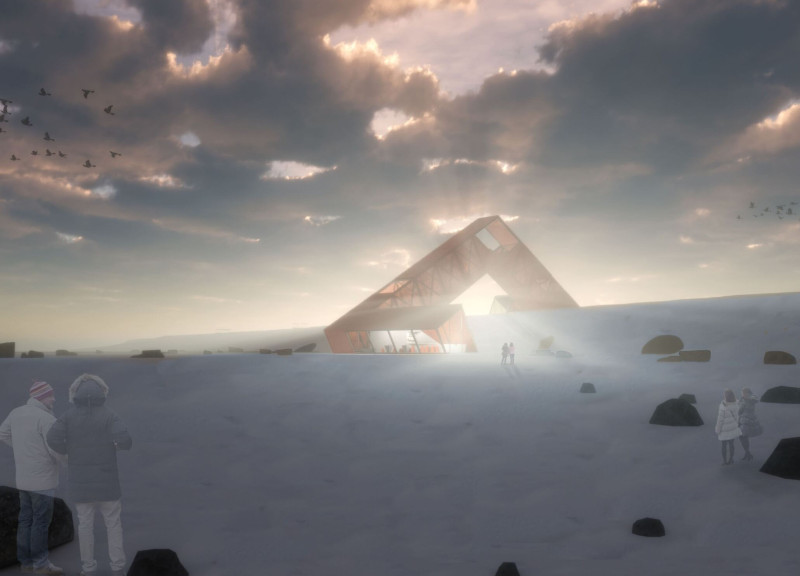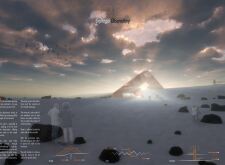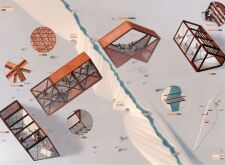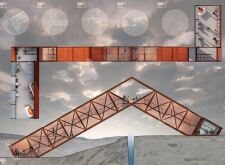5 key facts about this project
The Grjótagjá Observatory is located at the meeting point of the North American and Eurasian tectonic plates in Iceland. It serves as a space for exploration and engagement, allowing visitors to appreciate the striking geological landscape. The design focuses on the theme of connection and separation, inviting users to interact with the natural environment through structured pathways and observation points.
Concept and Design
The design reflects the idea of an arch that connects the two continents. This representation encourages visitors to experience the earth's geological features in a tactile way. The space is not only for observation but also for movement and exploration, leading users on a journey through the unique landscape.
Pathway Organization
Visitors follow a series of pathways that act as links between various facilities. These include public caves, a lobby, a café, toilets, and the main observatory area. The careful arrangement of these spaces enhances the overall experience, providing clear access and encouraging exploration while maintaining connections among different areas.
Materiality and Sustainability
The structure is built using raw materials that resonate with the surrounding environment. Steel beams and poles form the main framework, while the outer skin comprises four layers of reinforcing bars. This simple yet effective choice promotes durability and stability. Additionally, the design includes a water collection system within the poles, emphasizing a commitment to sustainability and responsible resource use.
Spatial Dynamics
Spaces within the observatory encompass both public areas and private retreats. Paths lead to quiet private baths, allowing visitors to choose their level of engagement. This thoughtful design encourages a variety of experiences and interactions. The emphasis on movement invites exploration while deepening the connection to the natural world.
The observatory’s panoramic viewpoint is reached by an ascending staircase, offering visitors a full view of the surrounding landscape, reinforcing the relationship between people and the powerful geological forces at play in this remarkable location.





















































